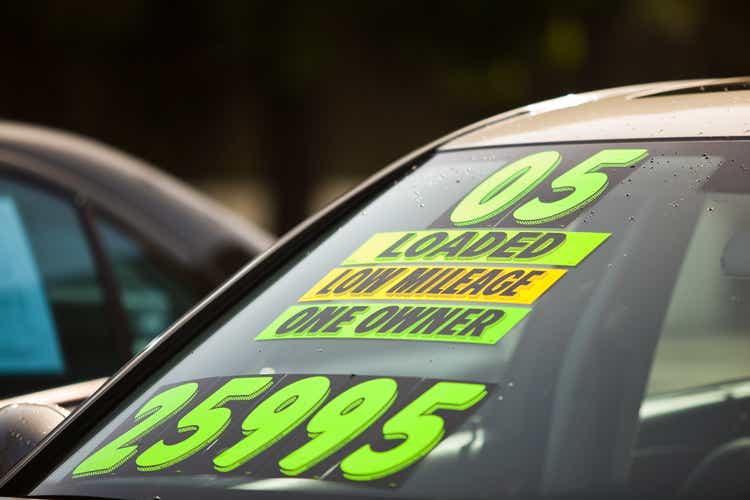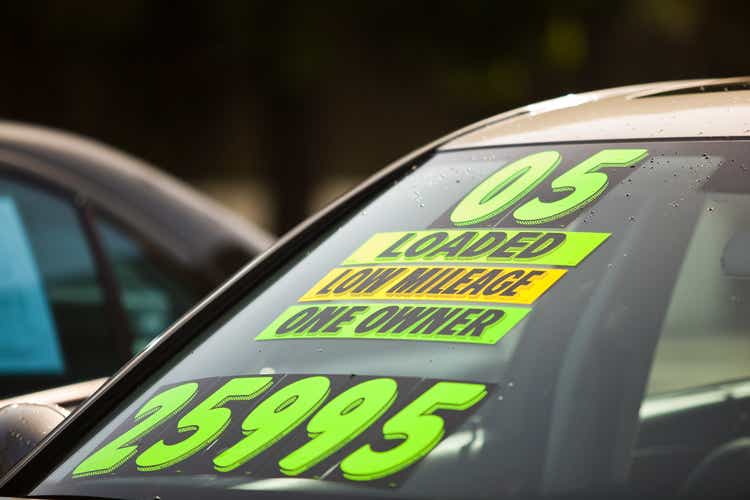
halbergman
Companies that aren’t making money from used cars are doing something very wrong.
Used car sales and prices surged during the pandemic as new vehicle production fell with the Covid-induced supply chain disruptions. But while those problems have eased, the number of new cars being produced continues to lag demand.
Industry analysts expect an estimated 10 million to 12 million fewer cars will be produced in the five-year period between 2020 and 2025 compared to pre-pandemic output from automakers. No new cars means no new used cars, either.
Another important source of used cars, leased automobiles, is also in short supply. In a normal year, 4 million leased vehicles are returned. Cars.com estimates that from 2023 to 2026 there will be up to 5.8 million cars missing from that equation.
“That’s a hole coming in the used vehicle market,” said Cars.com’s David Greene, the company’s industry and marketplace analyst. Greene said consumers who thought they were overpaying during the pandemic for used vehicles may in fact have gotten bargains.
“Prices are going to stay elevated for several years,” Greene said. “The entire industry is winning.”
The sector has accordingly seen major gains year-to-date, with Carvana (NYSE:CVNA) up the most at nearly 1,000%, followed by ACV Auctions (NASDAQ:ACVA) up 106%, America’s Car-Mart, Inc. (NASDAQ:CRMT) up 55%, Lithia Motors (NYSE:LAD) up 54% and CarMax (NYSE:KMX) up 50%.
Still not enough cars
For 2023, Cox Automotive, an automotive services organization, estimates 35.5 million used vehicles will be sold. That’s down from the average of around 38 million pre-pandemic. While that number is expected to jump to 36.2 million in 2024, it will still be below average because of the lack of cars on the market, said Chris Frey, business intelligence senior manager for Cox Automotive.
“That’s creating a situation where prices are higher, supply is a bit lower, and people are having to go deeper into used cars,” Frey said. “That means older and higher mileage units to find something appropriate for their monthly payment, which is the strongest determining factor of what affordability is. “
As the fourth quarter approaches, there is typically a depreciation in pricing that creates a favorable market for consumers, according to Vroom (NASDAQ:VRM).
That might not happen this year though. According to a recent Cox report, Vroom said that, “wholesale pricing may not decrease as we have typically seen in the market, potentially because dealer lots are still light on used vehicle supply.”
Though supply issues have been the driving force of late, pricing and interest rates always impact demand.
“If the cost of financing a car is high, consumers decide to hold onto their current vehicles until getting one is more affordable” according to a Vroom spokesperson. “Similarly, higher interest rates might make it difficult for subprime customers to purchase vehicles lowering demand for certain types of vehicles.”
The macro environment, however, appears to be healthier than expected with last week’s Commerce Department report showing that U.S. consumer spending increased by the most in six months in July.
“There is this huge pent up demand right now,” said Cars.com’s Greene. “Until that clears I think we’ll still see strong sales and strong demand.”








